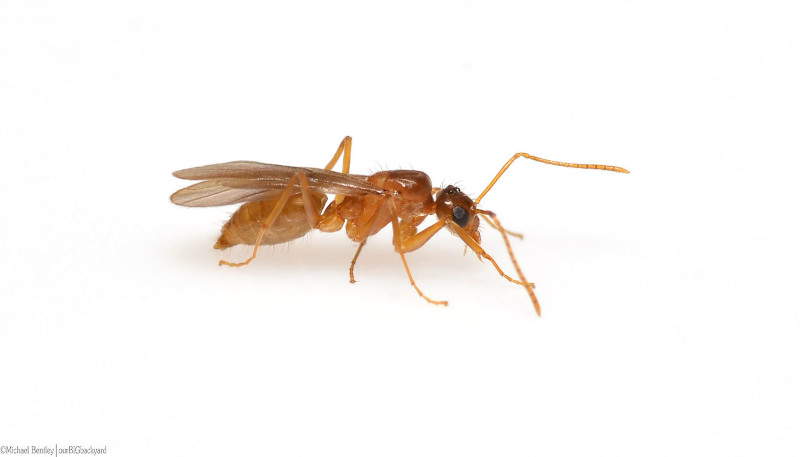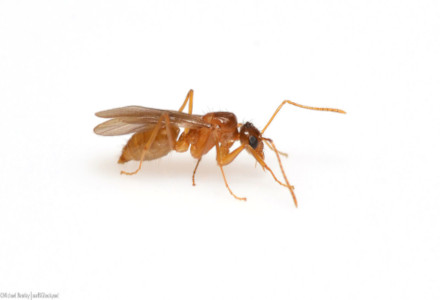
Photographer: Bentleypkt
CC License: https://bit.ly/3CelqAZ
Rasberry Crazy Ant Facts
- Firstly, the term Rasberry Crazy Ant names a highly invasive and destructive species of ant native to a tropical environment.
- Also popular as the tawny crazy ant or Nylanderia fulva, this incredible species, unlike most others, has multiple queens in a single nest.
- In addition, this invertebrate appears to displace other ant species, even the dreaded fire ant, given its tendency to reproduce in vast numbers.
- Finally, in the United States, this particular ant is considered an invasive species of insect, with the heaviest infestation occurring in the state of Texas.
Related Articles
Bullet Ant Argentine Ant Driver Ant
Photographer: Bentleypkt
CC License: https://bit.ly/3Cfsg9c
Rasberry Crazy Ant Physical Description
Firstly, the Rasberry Crazy Ant, despite its fearsome reputation and destructive tendencies, remains a rather diminutive variety of ant.
In fact, the average individual only grows to about 0.125 in (3.2 mm) in length, making it somewhat smaller than competing species.
In coloring, this tiny but quite impressive insect also resembles many related species, being primarily shades of red and dark brown.
Finally, the majority of its body also develops a covering of small, reddish-brown hairs, which aid in camouflage.
- Kingdom: Animalia
- Phylum: Euarthropoda
- Class: Insecta
- Order: Hymenoptera
- Family: Formicidae
- Genus: Nylanderia
- Species: N. fulva
Photographer: Bentleypkt
CC License: https://bit.ly/3CelqAZ
Rasberry Crazy Ant Distribution, Habitat, and Ecology
Although the Rasberry Crazy Ant now inhabits a wide range of the world, the remarkable invertebrate evolved as native to portions of South America.
Rather uniquely among related species, this particular insect does not normally construct a nest, preferring another approach.
Most commonly, the insect chooses to establish its massive colonies under large stones or piles of whatever debris it finds convenient.
Most notably, it actually tends aphids for the sugar-rich liquid these secrete, as well as consuming small vertebrates, insects, and plants.
Finally, this astounding creature has a strange and unexplained affinity for electrical equipment, often causing great damage
Species Sharing Its Range
Check out our other articles on 6 Mysterious Natural Phenomena, Psychedelic Frogfish, Reynisfjara Beach, Kemps Ridley Sea Turtle

